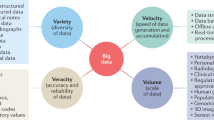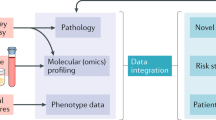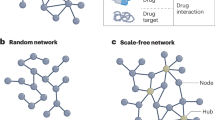Abstract
An important need exists to better understand and stratify kidney disease according to its underlying pathophysiology in order to develop more precise and effective therapeutic agents. National collaborative efforts such as the Kidney Precision Medicine Project are working towards this goal through the collection and integration of large, disparate clinical, biological and imaging data from patients with kidney disease. Ontologies are powerful tools that facilitate these efforts by enabling researchers to organize and make sense of different data elements and the relationships between them. Ontologies are critical to support the types of big data analysis necessary for kidney precision medicine, where heterogeneous clinical, imaging and biopsy data from diverse sources must be combined to define a patient’s phenotype. The development of two new ontologies — the Kidney Tissue Atlas Ontology and the Ontology of Precision Medicine and Investigation — will support the creation of the Kidney Tissue Atlas, which aims to provide a comprehensive molecular, cellular and anatomical map of the kidney. These ontologies will improve the annotation of kidney-relevant data, and eventually lead to new definitions of kidney disease in support of precision medicine.
Key points
-
Ontologies are powerful tools for organizing, integrating and linking heterogeneous data types, especially in the biomedical sciences.
-
Significant additions to biomedical ontologies are necessary to better define kidney molecular and histopathological phenotypes, which is critical for kidney precision medicine.
-
The Kidney Precision Medicine Project is creating a community-based Kidney Tissue Atlas to integrate molecular, cellular and anatomical knowledge of the kidney.
-
The development of the Kidney Tissue Atlas Ontology and the Ontology of Precision Medicine and Investigation will facilitate data collection, harmonization and analysis in support of kidney precision medicine.
-
The Kidney Precision Medicine Project has extensively adopted, reused and extended community-based reference ontologies to support the annotation of kidney data.
This is a preview of subscription content, access via your institution
Access options
Access Nature and 54 other Nature Portfolio journals
Get Nature+, our best-value online-access subscription
$29.99 / 30 days
cancel any time
Subscribe to this journal
Receive 12 print issues and online access
$209.00 per year
only $17.42 per issue
Buy this article
- Purchase on Springer Link
- Instant access to full article PDF
Prices may be subject to local taxes which are calculated during checkout



Similar content being viewed by others
References
Abrahams, E. Right drug-right patient-right time: personalized medicine coalition. Clin. Transl Sci. 1, 11–12 (2008).
Khwaja, A. KDIGO clinical practice guidelines for acute kidney injury. Nephron Clin. Pract. 120, c179–c184 (2012).
Stevens, P. E. & Levin, A. Kidney Disease: Improving Global Outcomes Chronic Kidney Disease Guideline Development Work Group Members. Evaluation and management of chronic kidney disease: synopsis of the kidney disease: improving global outcomes 2012 clinical practice guideline. Ann. Intern. Med. 158, 825–830 (2013).
Hawrylycz, M. et al. in Springer Handbook of Bio-/Neuroinformatics. (ed. Kasabov, N.) 1111–1126 (Springer, 2014).
Cancer Genome Atlas Research Network. et al. The Cancer Genome Atlas Pan-Cancer analysis project. Nat. Genet. 45, 1113–1120 (2013).
HuBMAP Consortium. The human body at cellular resolution: the NIH Human Biomolecular Atlas Program. Nature 574, 187–192 (2019).
Regev, A. et al. The Human Cell Atlas. Elife 6, e27041 (2017).
Cimiano, P. in Ontology Learning and Population from Text: Algorithms, Evaluation and Applications (ed. Cimiano, P.) 9–17 (Springer, 2006).
Gruber, T. R. Toward principles for the design of ontologies used for knowledge sharing? Int. J. Human-Computer Stud. 43, 907–928 (1995).
Ashburner, M. et al. Gene ontology: tool for the unification of biology. The Gene Ontology Consortium. Nat. Genet. 25, 25–29 (2000).
Huang, D. W., Sherman, B. T. & Lempicki, R. A. Bioinformatics enrichment tools: paths toward the comprehensive functional analysis of large gene lists. Nucleic Acids Res. 37, 1–13 (2009).
Subramanian, A. et al. Gene set enrichment analysis: a knowledge-based approach for interpreting genome-wide expression profiles. Proc. Natl Acad. Sci. USA 102, 15545–15550 (2005).
Doms, A. & Schroeder, M. GoPubMed: exploring PubMed with the Gene Ontology. Nucleic Acids Res. 33, W783–W786 (2005).
Thomas, P. D. et al. Gene Ontology Causal Activity Modeling (GO-CAM) moves beyond GO annotations to structured descriptions of biological functions and systems. Nat. Genet. 51, 1429–1433 (2019).
Whetzel, P. L. et al. BioPortal: enhanced functionality via new Web services from the National Center for Biomedical Ontology to access and use ontologies in software applications. Nucleic Acids Res. 39, W541–W545 (2011).
Mungall, C. J., Torniai, C., Gkoutos, G. V., Lewis, S. E. & Haendel, M. A. Uberon, an integrative multi-species anatomy ontology. Genome Biol. 13, R5 (2012).
Rosse, C. & Mejino, J. L. V. Jr. A reference ontology for biomedical informatics: the Foundational Model of Anatomy. J. Biomed. Inform. 36, 478–500 (2003).
Natale, D. A. et al. Protein Ontology (PRO): enhancing and scaling up the representation of protein entities. Nucleic Acids Res. 45, D339–D346 (2017).
Kibbe, W. A. et al. Disease Ontology 2015 update: an expanded and updated database of human diseases for linking biomedical knowledge through disease data. Nucleic Acids Res. 43, D1071–D1078 (2015).
Shefchek, K. A. et al. The Monarch Initiative in 2019: an integrative data and analytic platform connecting phenotypes to genotypes across species. Nucleic Acids Res. https://doi.org/10.1093/nar/gkz997 (2019).
Kamdar, M. R., Tudorache, T. & Musen, M. A. A systematic analysis of term reuse and term overlap across biomedical pntologies. Semant. Web 8, 853–871 (2017).
Euzenat, J. & Shvaiko, P. Ontology Matching. https://doi.org/10.1007/978-3-642-38721-0 (Springer, 2013).
Smith, B. et al. The OBO Foundry: coordinated evolution of ontologies to support biomedical data integration. Nat. Biotechnol. 25, 1251–1255 (2007).
Robinson, P. N. & Mundlos, S. The Human Phenotype Ontology. Clin. Genet. 77, 525–534 (2010).
Haendel, M. A., Chute, C. G. & Robinson, P. N. Classification, ontology, and precision medicine. N. Engl. J. Med. 379, 1452–1462 (2018).
Keenan, A. B. et al. The Library of Integrated Network-Based Cellular Signatures NIH program: system-level cataloging of human cells response to perturbations. Cell Syst. 6, 13–24 (2018).
Vempati, U. D. et al. Metadata standard and data exchange specifications to describe, model, and integrate complex and diverse high-throughput screening data from the Library of Integrated Network-based Cellular Signatures (LINCS). J. Biomol. Screen. 19, 803–816 (2014).
Ong, E. et al. Ontological representation, integration, and analysis of LINCS cell line cells and their cellular responses. BMC Bioinformatics 18, 556 (2017).
ENCODE Project Consortium. An integrated encyclopedia of DNA elements in the human genome. Nature 489, 57–74 (2012).
Malladi, V. S. et al. Ontology application and use at the ENCODE DCC. Database 2015 (2015).
McMahon, A. P. et al. GUDMAP: the genitourinary developmental molecular anatomy project. J. Am. Soc. Nephrol. 19, 667–671 (2008).
Cole, N. I. et al. An ontological approach to identifying cases of chronic kidney disease from routine primary care data: a cross-sectional study. BMC Nephrol. 19, 85 (2018).
Bajema, I. M. et al. Revision of the International Society of Nephrology/Renal Pathology Society classification for lupus nephritis: clarification of definitions, and modified National Institutes of Health activity and chronicity indices. Kidney Int. 93, 789–796 (2018).
Leung, N. et al. The evaluation of monoclonal gammopathy of renal significance: a consensus report of the International Kidney and Monoclonal Gammopathy Research Group. Nat. Rev. Nephrol. 15, 45–59 (2019).
Sethi, S. et al. Mayo Clinic/Renal Pathology Society consensus report on pathologic classification, diagnosis, and reporting of GN. J. Am. Soc. Nephrol. 27, 1278–1287 (2016).
Harding, S. D. et al. The GUDMAP database–an online resource for genitourinary research. Development 138, 2845–2853 (2011).
Little, M. H. et al. A high-resolution anatomical ontology of the developing murine genitourinary tract. Gene Expr. Patterns 7, 680–699 (2007).
Hayamizu, T. F. et al. EMAP/EMAPA ontology of mouse developmental anatomy: 2013 update. J. Biomed. Semant. 4, 15 (2013).
Haas, M. et al. Consensus definitions for glomerular lesions by light and electron microscopy: recommendations from a working group of the Renal Pathology Society. Kidney Int. https://doi.org/10.1016/j.kint.2020.08.006 (2020).
Diehl, A. D. et al. The Cell Ontology 2016: enhanced content, modularization, and ontology interoperability. J. Biomed. Semant. 7, 44 (2016).
Hansen, J., Meretzky, D., Woldesenbet, S., Stolovitzky, G. & Iyengar, R. A flexible ontology for inference of emergent whole cell function from relationships between subcellular processes. Sci. Rep. 7, 17689 (2017).
No authors listed. Focal segmental glomerulosclerosis. Human Phenotype Biology http://purl.obolibrary.org/obo/HP_0000097 (2020).
No authors listed. Cell Ontology. glomerular visceral epithelial cell. Ontobee. http://purl.obolibrary.org/obo/CL_0000653 (2020).
He, Y. et al. KTAO: a Kidney Tissue Atlas Ontology to support community-based kidney knowledge base development and data integration. in Proc. 9th International Conference on Biological Ontology (RWTH, 2018).
Peters, B., & The OBI Consortium. Ontology for biomedical investigations. Nat. Preced. https://doi.org/10.1038/npre.2009.3623 (2009).
Kang, Y., Fink, J. C., Doerfler, R. & Zhou, L. Disease specific ontology of adverse events: ontology extension and adaptation for chronic kidney disease. Comput. Biol. Med. 101, 210–217 (2018).
Y. Lin, et al. Development of a BFO-based Informed Consent Ontology (ICO). in Proc. 5th International Conference on Biomedical Ontologies (ICBO) (2014).
He, Y. et al. OPMI: the Ontology of Precision Medicine and Investigation and its support for clinical data and metadata representation and analysis. in Proc. 11th International Conference on Biomedical Ontology (2019).
Hripcsak, G. et al. Observational Health Data Sciences and Informatics (OHDSI): opportunities for observational researchers. Stud. Health Technol. Inform. 216, 574–578 (2015).
Eddy, S., Mariani, L. H. & Kretzler, M. Integrated multi-omics approaches to improve classification of chronic kidney disease. Nat. Rev. Nephrol. https://doi.org/10.1038/s41581-020-0286-5 (2020).
Stokman, M. F. et al. The expanding phenotypic spectra of kidney diseases: insights from genetic studies. Nat. Rev. Nephrol. 12, 472–483 (2016).
Salem, R. M. et al. Genome-wide association study of diabetic kidney disease highlights biology involved in glomerular basement membrane collagen. J. Am. Soc. Nephrol. 30, 2000–2016 (2019).
Bandrowski, A. et al. The Ontology for Biomedical Investigations. PLoS ONE 11, e0154556 (2016).
Smith, J. R. et al. The clinical measurement, measurement method and experimental condition ontologies: expansion, improvements and new applications. J. Biomed. Semant. 4, 26 (2013).
He, Y. et al. OAE: the Ontology of Adverse Events. J. Biomed. Semant. 5, 29 (2014).
Hastings, J. et al. ChEBI in 2016: improved services and an expanding collection of metabolites. Nucleic Acids Res. 44, D1214–D1219 (2016).
Hanna, J., Joseph, E., Brochhausen, M. & Hogan, W. R. Building a drug ontology based on RxNorm and other sources. J. Biomed. Semant. 4, 44 (2013).
Acknowledgements
The KPMP project is supported by the NIH National Institute of Diabetes and Digestive and Kidney Diseases (NIDDK) U2C project 1U2CDK114886. The authors appreciate the discussion with, editing by and support from Deborah Hoshizaki from the NIDDK and the KPMP consortium.
Author information
Authors and Affiliations
Consortia
Contributions
This review was coordinated by the KPMP, with S.M. and Y.H. providing conceptual guidance. E.O., J.S., J.F.O., B.S., F.D., L.B., S.J., C.P., S.M. and Y.H. contributed to the design, development, coordination and application of the KPMP ontologies. E.O., L.L.W., J.S., J.F.O., S.M. and Y.H. wrote the manuscript with support from B.S., S.J., I.H.D., S.S.W., D.C.C., C.S., C.W., A.D.D., C.J.M. and M.K. J.S., J.F.O., S.J., I.H.D., M.T.V., S.S.W., J. Himmelfarb and M.K. provided guidance on clinical nephrology, A.Z.R. and L.B. provided guidance on pathology, B.S. and F.D. provided guidance on data systems, D.C.C., T.A., C.R.A., C.S. and R.I. provided guidance on omics analyses and J. Hansen, C.W., A.D.D., C.M., M.H. and P.N.R. provided guidance on reference ontologies. All authors reviewed and approved the manuscript.
Corresponding authors
Ethics declarations
Competing interests
The authors declare no conflicts of interest.
Additional information
Peer review information
Nature Reviews Nephrology thanks B. Smith and the other, anonymous, reviewer(s) for their contribution to the peer review of this work.
Publisher’s note
Springer Nature remains neutral with regard to jurisdictional claims in published maps and institutional affiliations.
Related links
Allen Brain Atlas: https://portal.brain-map.org/
Encyclopedia of DNA Elements (ENCODE) project: https://www.encodeproject.org/
Human BioMolecular Atlas Program: https://commonfund.nih.gov/hubmap
Human Cell Atlas: https://www.humancellatlas.org/
International Classification of Diseases (ICD): https://www.who.int/classifications/icd/en/
Kidney Precision Medicine Project: https://kpmp.org/
Kidney Tissue Atlas data portal: https://atlas.kpmp.org/
Library of Integrated Network-Based Cellular Signatures: http://www.lincsproject.org/
Ontology of General Medical Science: https://github.com/OGMS/ogms
Ontology of Genes and Genomes: http://www.obofoundry.org/ontology/ogg.html
Open Biological and Biomedical Ontology (OBO) Foundry: http://www.obofoundry.org/
Systematized Nomenclature of Medicine (SNOMED): https://www.snomed.org/snomed-ct/
The Cancer Genome Atlas: https://www.cancer.gov/tcga
Supplementary information
Glossary
- Natural language
-
A language that has evolved naturally in humans and is used in speech or writing, as opposed to a constructed or formal language.
- Logical expressions
-
A programmatic construct that expresses logical operations over mathematical terms or entities, which allows a computer to reason over the entities in the expression.
- Controlled vocabularies
-
A way to organize knowledge for retrieval; comprises a set of selected terms used for document indexing and information retrieval.
- Taxonomies
-
Controlled vocabularies that have a hierarchical structure indicating subclass relationships between entities.
- Fuzzy matching
-
A technique that identifies the correspondence among phenotypic profiles that may be less than 100% perfect.
- Causal reasoning
-
The process used to identify the causality (cause and effect) between two entities.
- Case report forms
-
A document (paper or electronic) containing a questionnaire used for clinical research or other purposes.
Rights and permissions
About this article
Cite this article
Ong, E., Wang, L.L., Schaub, J. et al. Modelling kidney disease using ontology: insights from the Kidney Precision Medicine Project. Nat Rev Nephrol 16, 686–696 (2020). https://doi.org/10.1038/s41581-020-00335-w
Accepted:
Published:
Issue Date:
DOI: https://doi.org/10.1038/s41581-020-00335-w
This article is cited by
-
A drug prescription recommendation system based on novel DIAKID ontology and extensive semantic rules
Health Information Science and Systems (2024)
-
Semantic Integration of Heterogeneous Data Sources Using Ontology-Based Domain Knowledge Modeling for Early Detection of COVID-19
SN Computer Science (2022)
-
Langfristige körperliche und psychische Folgen chronischer Nierenerkrankungen
Bundesgesundheitsblatt - Gesundheitsforschung - Gesundheitsschutz (2022)
-
A comprehensive update on CIDO: the community-based coronavirus infectious disease ontology
Journal of Biomedical Semantics (2022)
-
A user-friendly tool for cloud-based whole slide image segmentation with examples from renal histopathology
Communications Medicine (2022)



